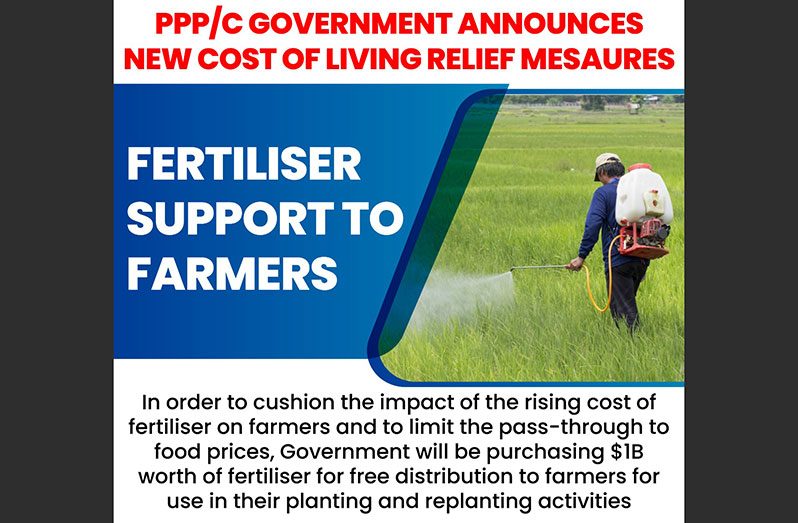THE government will be purchasing and distributing, free of cost, $1 billion in fertilisers to farmers all across Guyana as a means of absorbing the rising global costs for the commodity and to prevent the costs being passed on to consumers at the market.
The $1 billion will be drawn from the $5 billion the government had set aside in the 2022 national budget to implement measures to ease the cost of living to citizens, which is caused by the external economic shocks from the COVID-19 pandemic and the war between Russia and Ukraine.
This latest government welfare measure was one of four announced by President, Dr Irfaan Ali, on Monday in a video message aired on his official Facebook page.
“The cost of a fertiliser has affected the production cost[s] for farmers which have translated into increased prices in the markets. In order to cushion the impact of the rising cost of fertiliser on farmers and to limit the pass through to food prices, my government will be purchasing $1 billion dollars worth of fertiliser for free distribution to farmers for use in their planting activities,” Dr. Ali declared.
He further went on to note that: “Considering that fertiliser accounts for between 15 to 30 per cent of the total operating cost, this initiative will significantly reduce import costs and help to ensure scaled-up production and adequate supply of output, which is critical to maintaining price stability. [The] measures will be financed from the special $5 billion allocated in budget 2022 for the purpose of easing the impact of [the] rising cost of living.”
Prior to announcing the measure, the President gave a reminder that prices for fertilisers on the World Market rose by 80 per cent in 2021 and has already risen by a further 30 per cent since the start of 2022.
“Urea for example was trading at US$245 dollars per metric tonne; last month the average price for urea was $925 per metric tonne. This represented the rapid surge of the price for natural gas which is key in the production of fertiliser. The world market price for wheat has similarly skyrocketed from US$223 per metric tonne to $495 [per metric tonne] last month. On top of all of this in Guyana we’ve had to grapple with the consequences of unusually high rainfall in 2021, resulting in floods that severely disrupted food production,” the government noted.
As a result of the increased prices for fertilisers, the prices of vegetables and other produce in the market have seen increases in prices over the past few years. However, the government has been implementing a number of measures to cushion the blow.



.jpg)










